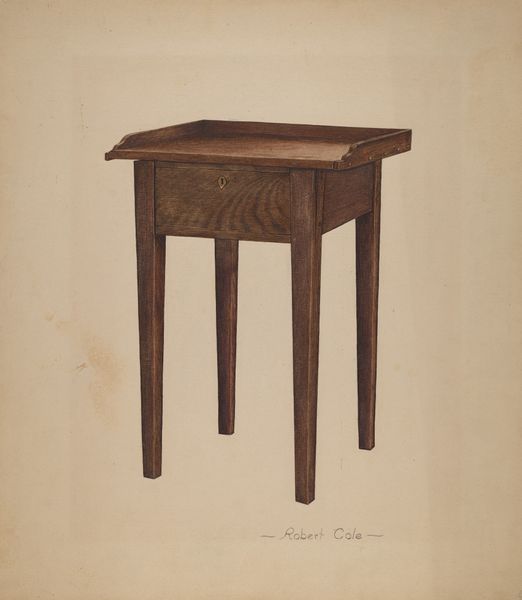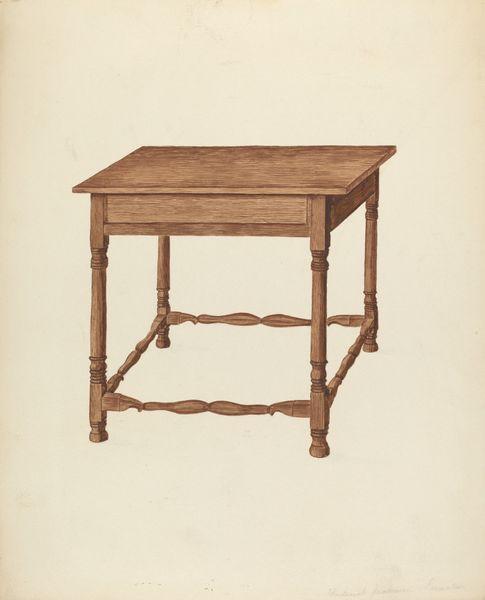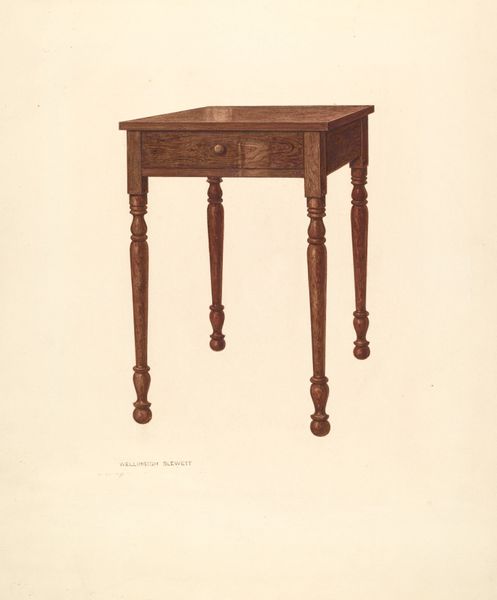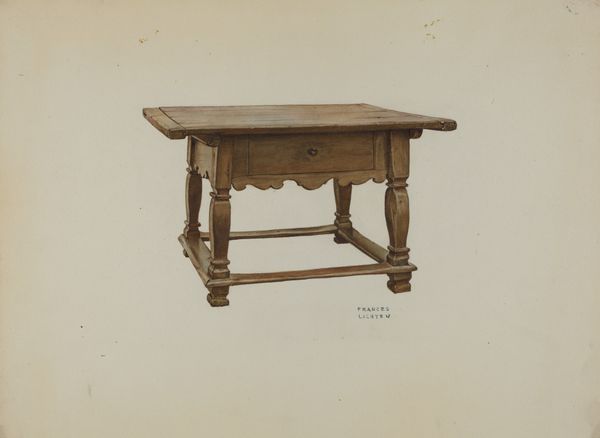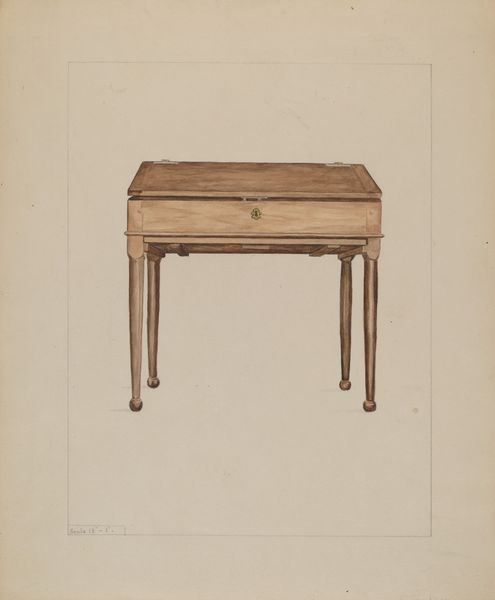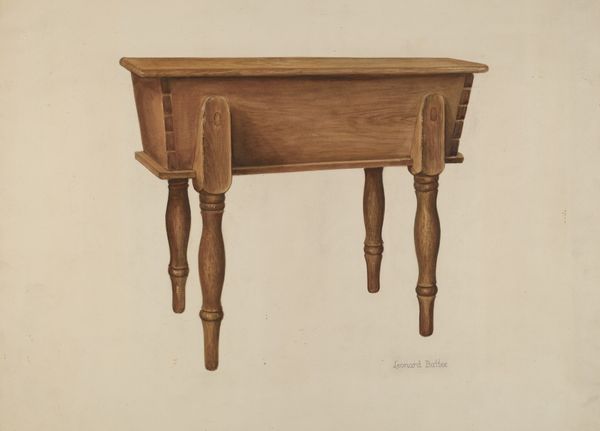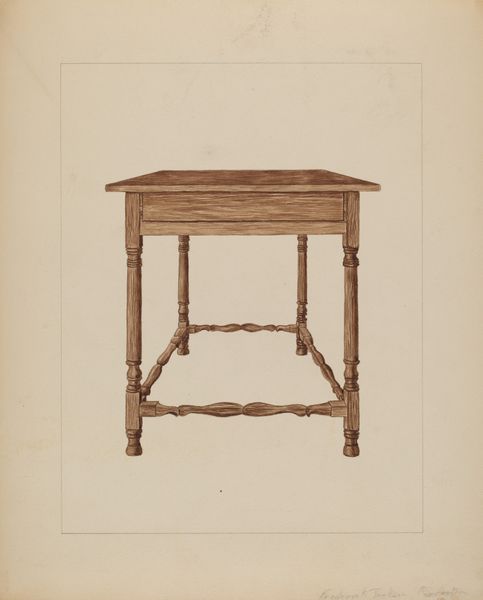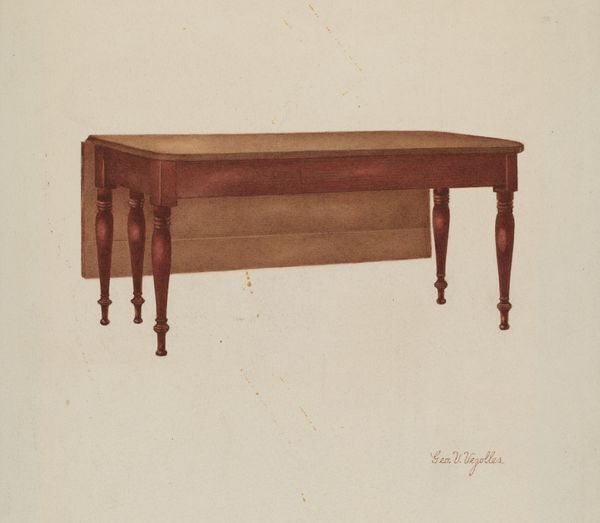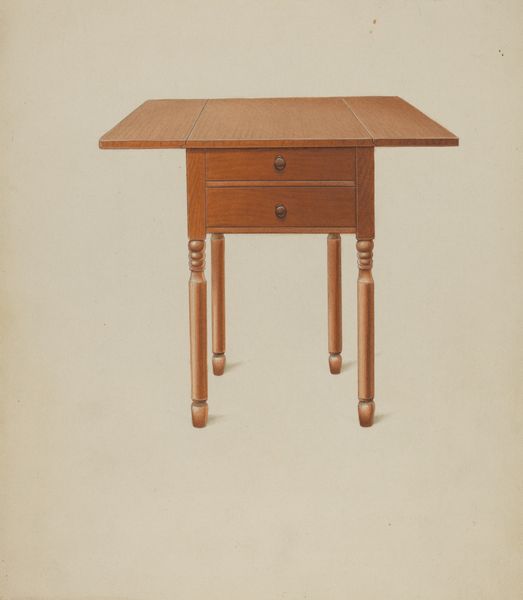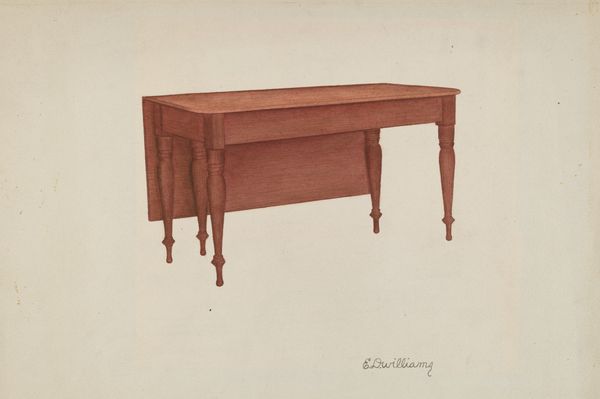
drawing, wood
#
drawing
#
charcoal drawing
#
geometric
#
wood
#
academic-art
#
charcoal
Dimensions: overall: 28 x 35.9 cm (11 x 14 1/8 in.) Original IAD Object: 28 1/2" high; 30" wide; 15" deep
Copyright: National Gallery of Art: CC0 1.0
Curator: The artwork before us, entitled “Shaker Desk,” was created around 1936 by Ray Holden. It appears to be rendered in charcoal and possibly other drawing media on paper. Editor: It strikes me as strangely peaceful, even with its rigid geometric forms. The artist captured a serene, almost monastic simplicity. Curator: It's interesting that you mention "monastic" because the Shaker community itself valued simplicity, utility, and honesty in their design, mirroring their spiritual beliefs which aimed at a harmonious integration of daily life with spiritual ideals. We see that embodied in the clean lines and functional form of this desk. How do you see its forms interacting? Editor: I’m immediately drawn to the verticality established by those elegantly tapering legs against the more solid, horizontal plane of the desk surface. The contrasting visual weights creates a sense of balanced tension. And the warm tonality—presumably the color of the wood rendered by the charcoal — feels grounding. Curator: Absolutely. These Shaker designs served the domestic sphere and encouraged independence through a personal workspace for, in many cases, women managing household and personal business in what had often been previously public spheres largely dominated by men. These objects signified autonomy, a means to redefine the gendered roles of its time. Editor: So it is not simply about reductive aesthetics. Semiotically speaking, this "Shaker Desk" becomes more than just furniture; it's an assertion of social identity and perhaps even resistance? Curator: Precisely. The desk is both a workspace and a quiet declaration, challenging prescribed roles. It exemplifies a convergence of the utilitarian with evolving socio-political norms around identity. Editor: Considering its composition, its placement within this vast, neutral plane emphasizes both the isolation and the self-contained nature of this object. Curator: Viewing art is rarely neutral. This invites us to think of art’s interaction within a domestic narrative, its power as an ideological agent to alter conventional practices. Editor: I’ve never thought of something as simple and familiar as a desk as encapsulating so many layers. The artistry resides, at least partly, in inviting one to perceive the world anew, even through an everyday object.
Comments
No comments
Be the first to comment and join the conversation on the ultimate creative platform.
